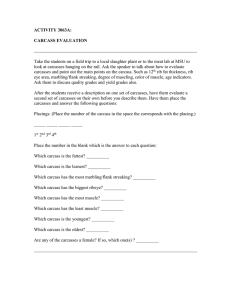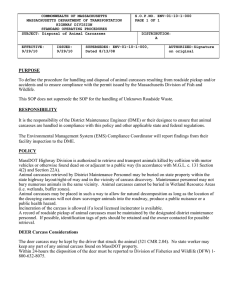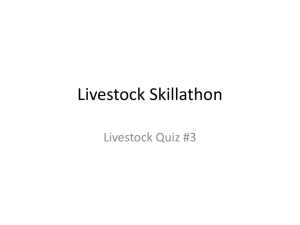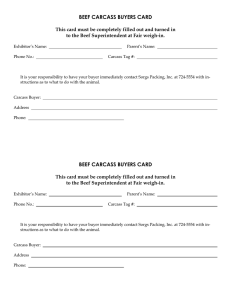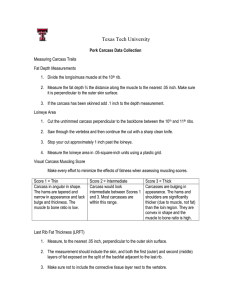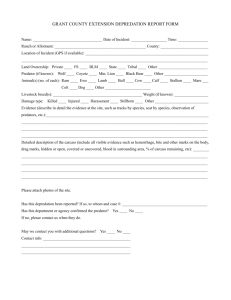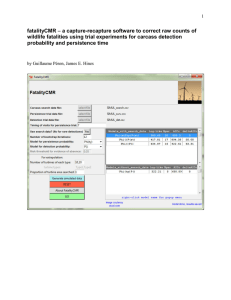KEY FOR QUIZ 1: CARCASS EVALUATION Topic # 3063
advertisement
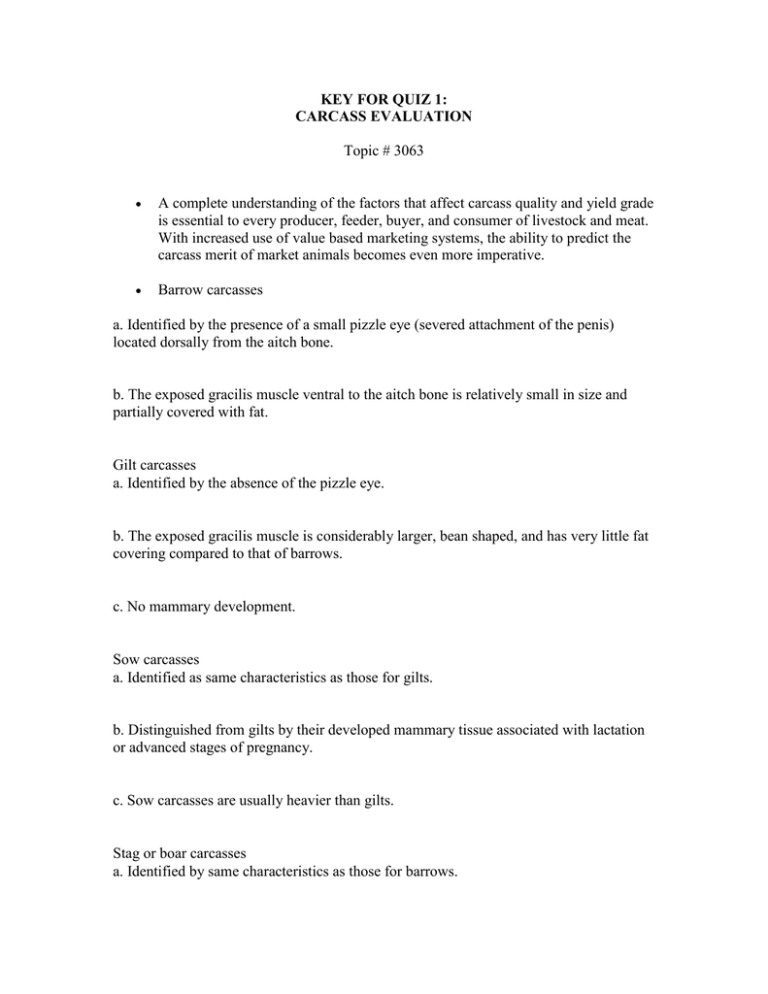
KEY FOR QUIZ 1: CARCASS EVALUATION Topic # 3063 A complete understanding of the factors that affect carcass quality and yield grade is essential to every producer, feeder, buyer, and consumer of livestock and meat. With increased use of value based marketing systems, the ability to predict the carcass merit of market animals becomes even more imperative. Barrow carcasses a. Identified by the presence of a small pizzle eye (severed attachment of the penis) located dorsally from the aitch bone. b. The exposed gracilis muscle ventral to the aitch bone is relatively small in size and partially covered with fat. Gilt carcasses a. Identified by the absence of the pizzle eye. b. The exposed gracilis muscle is considerably larger, bean shaped, and has very little fat covering compared to that of barrows. c. No mammary development. Sow carcasses a. Identified as same characteristics as those for gilts. b. Distinguished from gilts by their developed mammary tissue associated with lactation or advanced stages of pregnancy. c. Sow carcasses are usually heavier than gilts. Stag or boar carcasses a. Identified by same characteristics as those for barrows. b. The pizzle of stags and boars is larger and more prominent than in barrows because of sexual maturity. c. The shoulders of stags and boars are heavier muscled with larger bones and joints, and the skin over the shoulders is somewhat thicker and the color of lean is darker compared to boars. d. Stags and boar carcasses are usually heavier and more mature in appearance than barrows. CARCASS EVALUATION (3063) QUIZ ANSWER KEY CON'T. The first measurement is taken at the last rib to determine pork carcass USDA grade. The second measurement is taken at the 10th rib which is used to calculate percent muscle in pork carcasses. Area of the longissimus (eye) muscle on a hog is either estimated or measured in square inches on the cross section of the muscle at the 10th rib interface with a grid or planimeter. The ribeye area on both the right and left eye muscle of a lamb is measured because they sometimes differ in area. (Usually do not differ by more than .1 or .2 square inches.) The right and left areas are averaged to obtain ribeye area for each carcass. Area may be measured directly on the carcass with a grid or from a tracing of the right and left eye muscle by a compensating planimeter. Degree of marbling, color, firmness of lean in the eye muscle at the 10th rib Bull Hot carcass weight x .985 (1) degree of marbling and (2) degree of maturity Prime, Choice, Select, Standard, Commercial, Utility Marbling is an indicator of eating quality, however, as it increases caloric content also increases. Marbling is associated with length of time on feed, type of feed, and genetic capacity for laying down this fat deposit. Physiological indicators of maturity in beef carcasses include bone characteristics, ossification of cartilage, and color and texture of the ribeye muscle. Maturity in lamb carcasses is determined by an assessment of bone and muscle characteristics. 1. Bones include the break joint(s) and the shape of ribs. 2. The ridged surface of the break joint(s) is quite red, moist, and porous in A maturity and becomes progressively less red, drier, and harder with advancing maturity in the B group. 3. Muscle characteristics include an evaluation of the color of the inside flank muscles. Beef retail cuts: round, loin, rib, and chuck. Lamb retail cuts: leg, loin, rack and shoulder. a. Approximately 2 to 14 months of age. b. Have the characteristic "break joint" on at least one of their front shanks. c. Flank muscles on the inside of the carcass vary in color from slightly dark pink to slightly dark red. d. The ribs vary from quite round in shape to moderately flat and show redness on their surface. Chilled carcass weight is dived by live weight and multiplied by 100 to obtain dressing percentage. CARCASS EVALUATION (3063) QUIZ ANSWER KEY CON'T. Based upon a composite evaluation of conformation, maturity, and quality of lean flesh. Quality of lean flesh is evaluated by the quantity of fat streakings on the inside flank muscles, firmness of the lean flesh, and external fat. Conformation is an assessment of overall muscling in the lamb carcass with emphasis on the greatest development of muscling in the highest priced primal cuts which range in order of value from the leg, loin, rack (rib), and shoulder. Maturity is an assessment of physiological age of the animal.
